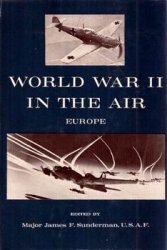Figure 20.2 traces a 100-year history of tariffs (taxes on imports) as a percentage of the value of total imports and as a percentage of the value of dutiable imports. (Dutiable imports were those subject to a tax; the rest were on the “free list.”) Although there are many fluctuations, many of which were the subject of bitter controversy, the overall pattern is clear. The tariff declined in the years leading up to the Civil War, ratcheted upward during the Civil War, remained at a high level until the turn of the century, and then declined once again.
This pattern is explained by two factors: the need of the federal government for revenue, and political pressure to maintain high tariff rates to protect American producers from foreign competition. The need for revenue during the Civil War itself is obvious, hence the upward ratchet during the war, but it should not be forgotten that the war created costs that persisted long afterwards. Much of the war was financed by issuing bonds, and the interest on those bonds had to be paid year for many years after the war ended. And there were veterans’ benefits that also had to be paid. The benefits were generous (and became more so as time passed), and a large number of Northern
FIGURE 20.2
Customs Duties as a Percentage of (1) Total Imports and (2) Dutiable Imports, 1821-1920
Tariffs slid steadily until the Civil War; then the new politics produced a sharp increase and new level that was maintained until the turn of the century.

Source: Historical Statistics, Colonial Times to 1970, 1975, 888.
Families were eligible. In fact, the veterans’ pension was so large that it has been called America’s first social security system. No wonder that tariffs remained high even after the war ended.
High tariffs were also important because they protected American manufacturers— farm products, typically, were exported—from foreign competition at the cost of forcing American consumers to pay higher prices. The politics of the tariff were based straightforwardly on the economic effects of the tariff. Republicans favored a high tariff which protected American manufacturers and provided revenues for Union veterans and their widows, veterans who usually voted Republican. Republicans often had the support of Northern industrial workers who saw high tariffs as job protection. Democrats favored lower tariffs because the farmers and small business people who supported the party saw high tariffs simply as a policy that raised the cost of living. Southern Democrats were especially incensed because the revenues from high tariffs went in part to support a pension for Northern soldiers and sailors.
The national prosperity of the 15 years before the Civil War seemed to refute protectionists’ argument that a healthy economy required high tariffs. But to win the votes of the industrial East, the Republicans advocated higher tariffs during the campaign of 1860. After the returns were in, and after the Southerners had left the Congress, but before Lincoln’s inauguration, Congress passed the Morrill Act of 1861, the first in a long series of laws levying ever-higher tariffs. The requirements of Civil War financing, at a time when import duties and domestic excises (taxes on specific commodities) furnished the principal revenues, provided another reason for raising tariffs to unprecedented highs.
For 25 years after the war, Democrats with help from some Republicans tried to reduce the “war tariffs,” but with little success. Yet there was a growing suspicion that high levels of protection not only made consumer goods cost more, but also fostered the rapid growth of business monopolies and oligopolies. During his first administration (1885-89), President Grover Cleveland placed the Democrats squarely on the side of greater freedom of trade, but two Democratic assaults on the protective system produced disappointingly modest results. And when the Republicans again took the White House, these gains were reversed: The McKinley tariff of 1890 raised the average level of protection and increased the number of articles on the dutiable list. Following insignificant reductions during Cleveland’s second term (1893-1897), the Dingley Act of 1897 raised duties again. More imports, by value, were then taxed than were admitted free. As might be expected, free goods were mostly raw and semifinished commodities requiring further processing, but even some farm products, raw wool and hides, were placed in a protected category.
The prosperity between 1897 and 1914 made it easy to defend high tariffs. Protectionists argued that the country was experiencing a high level of employment and economic activity because tariffs were high. Yet by 1900, American industry had obviously come of age. American manufacturers were competing in the markets of Europe; it was apparent, especially in the metal-processing industries, that most American firms needed no protection. The textile industries, which had enjoyed the benefits of high tariffs for a century, paid the lowest wages, had the highest unemployment, and suffered from the rigors of competition more than any other class of producers. As the populace felt the pressures of rising living costs in the first decade of the century, however, voters blamed the tariffs, and Democratic politicians exploited this unrest. When the Payne-Aldrich bill of 1909 failed to bring any relief from high tariffs, widespread political protest resulted.
In the campaign of 1912, the Democrats promised a downward revision of import duties, which was carried out in the Underwood-Simmons Bill of 1913. It placed iron and steel on the free list, and sharply reduced duties on cost-of-living items such as cotton and woolen textiles. The result was a simplified tariff structure, still of protective significance, with average duties about half of what they had been for several decades.
During President Woodrow Wilson’s administration, the average level of the tariffs was finally reduced to about the level that had prevailed just before 1860.
Economists have long wrestled with the idea that protection may be beneficial in the case of an “infant” industry. When a firm is first starting out, its productivity will be low because workers and managers do not have much on-the-job training, and the firm may not be able to survive competition from experienced foreign firms. Tariff protection will buy the domestic firm time to mature. Eventually, tariff protection can be removed. In the long run, the gains to the consumer from having a vigorous domestic producer may offset the short-term costs of protection. In recent years, this argument has been extended by a number of economists working in the field of strategic trade theory (Helpman and Krugman 1989).
One potential problem with the infant-industry argument, and similar arguments calling for tariffs during the early phase of an industry’s development (revealed in the long history of tariff protection after the Civil War), is that the “infants” may never grow up. As Bennett Baack and Edward Ray (1983) have shown, the structure of tariffs and subsequent levels of protection throughout the late nineteenth century were explained largely by the profit motives of established special interest groups rather than by a scientific determination of which infants needed protection based on costs and benefits to the economy as a whole.
Although we are justified in criticizing tariff protection for established industries, we should not exaggerate the costs to the American people. In many protected industries, vigorous domestic competition was a close substitute for foreign competition. At the turn of the century, imports were a little over 6 percent of GNP. The total loss to the United States from tariffs at the turn of the century was probably in the neighborhood of one half of one percent (Irwin 2007a). We should note, however, that while the overall loss was small, the gains and losses for particular interest groups resulting from changes in the tariff could be large (Irwin 2007b).




 World History
World History









